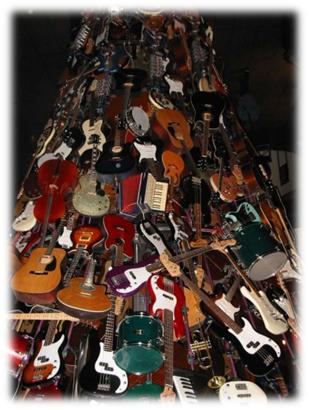 About a year ago, an industry friend called to talk a little radio, and in the course of the conversation asked me this question: “What’s going on with Country in Detroit?”
About a year ago, an industry friend called to talk a little radio, and in the course of the conversation asked me this question: “What’s going on with Country in Detroit?”
He was referencing WYCD’s ratings, which at the time cracked the 7-share threshold for 25-54 adults. And I explained that it is not the only Country station in the market. In the “lowly Rock arena,” Detroit has five Rock stations that in aggregate totaled in the low 20 share range – a pretty sizable slice of the market.
But such is the world of punditry, analysis, and shot-taking that permeates email blasts (often well named), blogs, and even occasionally the industry trade press. We enjoy observing and following the ups and downs of formats, stations, and personalities – from our jaded, skewed points of view.
So when I saw Mike Henry’s recent post “Public Radio Rocks Out” on Paragon’s blog, I felt compelled to respond. Mike laments the demise of great, bigger than life local rock stations that dotted market after market back in the ‘70s and ‘80s.
In the process, he extolls the programming, creativity, and freedom enjoyed by many of public radio’s Indie Rock and Triple A stations that he says “are finding success where commercial radio didn’t, can’t or won’t.”
Mentioning great public radio brands like WXPN, The Current, and WTMD among others, Mike talks about how these local stations are loaded with local sensibilities, accentuating homegrown music, and reflecting the vibe and culture of their communities. These are well-deserved accolades as these stations are breaking lots of ground -and often, lots of new music. But to suggest they’re succeeding because commercial rock radio has failed is a stretch. It also diminishes the accomplishments of these public radio stations.
Our company does a considerable amount of work in the public media space, and our research in the form of our unique national studies – five Public Radio Tech Surveys – has helped define and refine the space. Guys like Bruce Warren, Jim McGuinn and others in the public radio/Triple A sector are doing a great job with their stations, providing a unique sound and service in their markets.
But to suggest that because WNEW-FM, KLOL, KMET, and Zeta are long gone, and that their extinction symbolizes the state of rock radio today is a disservice to stations as diverse and accomplished as WMMR, KISW, WRIF, KSWD, the many Classic Rock stations carrying the torch, as well as Alternative stations as diverse as 91X and KNRK that continue to shape the sound of music in their markets.
These commercial brands are also intensely local, featuring great personalities, promotions, and initiatives that could only happen in their respective hometowns. And in market after market, they have the ratings to prove it.
Are there as many stellar rock stations as there were a couple of decades ago? Absolutely not. Markets are challenged by consolidation, rock clustering, and other inventions and conditions that have made the news in recent years. So perhaps that’s even a tribute to the great brands that remain – the ones that have survived the rush to change formats to Jammin’ Oldies, Movin’, or the flavor of the year.
Measurement of greatness comes in many ways, from Arbitron shares to membership dollars. Give this new breed of public radio its due.
But don’t do it at the expense of great commercial rock radio stations that are fighting the good fight.
And winning.
- What To Do If Your Radio Station Goes Through A Midlife Crisis - April 25, 2025
- A 2020 Lesson?It Could All Be Gone In A Flash - April 24, 2025
- How AI Can Give Radio Personalities More…PERSONALITY - April 23, 2025




…and some of those “legendary” stations went away because they got
self-absorbed and lazy.
True that. The best stations bring it every day – whether they’ve been around for 30 years or 3 years. Thanks, Marty.
There are still commercial rock stations that bring it every day and surprise, they’re the ones that still get great ratings. What I find perplexing amazing and just plain stupid is how so few groups make that connection.
Do they all sit around a conference table and conclude that a mail-in to mediocrity strategy is the soundest business decision? its not like stations like the ones you cite and say WDVE (do they think its something in the air in Pittsburgh that gets DVE those ratings?) are struggling to survive despite big numbers.
Do they not see the connection?
Right you are, Bob. The ratings tell a story about basic appeal. These stations can’t be market leaders withit mass acceptance. I would think that XPN’s Bruce Warren would admit that WMMR is a pretty strong radio station.
These successes aren’t accidents. These stations invest a great deal into these brands. Thanks for the comment.
Lets not forget KOMP Las Vegas who has been rocking for more than 30 years, and has been winning for many many of those years. The last ten especially. I know Lotus Broadcasting isnt one of your clients, but they should be included in the conversation.
Appreciate the nice shout-out for KOMP. There are many more stations on the strong list that I did not mention.